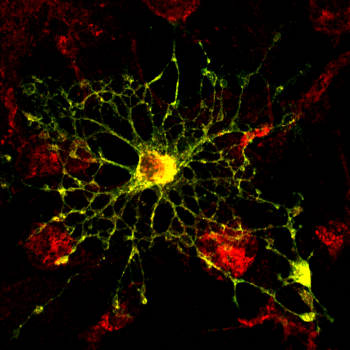
Scanning electron micrograph of HIV-1 budding (in green) from cultured lymphocyte
The past two weeks brought plenty of interesting science news, including the failure of a potential AIDS vaccine. From Popular Science:
The study, called HVTN-505, was begun in 2009, over the years enrolling over 2,500 volunteers. The vaccination process doesn’t actually involve any live or even deactivated HIV; instead, it starts with one that includes genetic material that’s simply modeled after the virus, to prime the immune system. Then comes the real vaccine, involving recombinant DNA (meaning, DNA from various sources) based on adenovirus type 5, a common cold virus that in this case has been disabled so it doesn’t actually cause a cold. Attached to those adenoviruses are artificial versions of HIV antigens. Antigens–the term is short for antibody generator–trigger an immune response, and these artificial antigens were designed to attack the three major HIV subtypes.
This technique had shown some mild success before; in a study in Thailand in 2009, it showed a 31 percent reduction in the HIV infection rate, which sounds good to me, but is apparently not enough to really do more than encourage further research. Unfortunately, that was as much success as this strategy ever saw.

